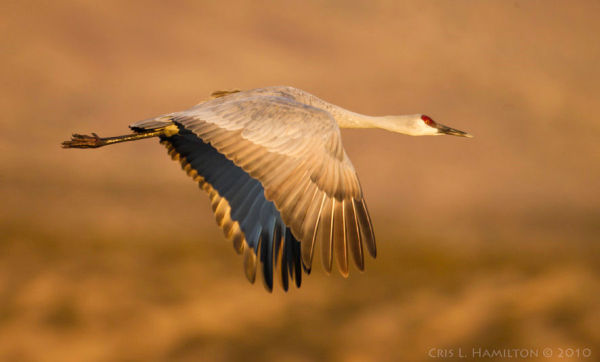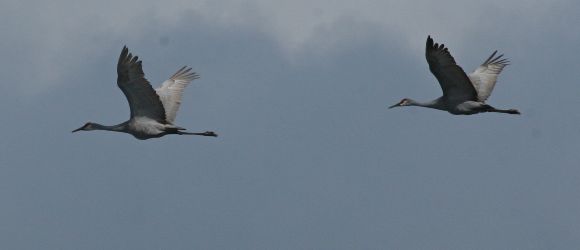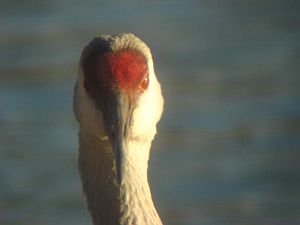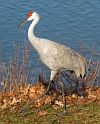
Here’s a beautiful photo to brighten your Sunday.
This sandhill crane is spending its winter in New Mexico where Cris Hamilton captured it when the light was just right.
(photo by Cris Hamilton)

Here’s a beautiful photo to brighten your Sunday.
This sandhill crane is spending its winter in New Mexico where Cris Hamilton captured it when the light was just right.
(photo by Cris Hamilton)

I know there are sandhill cranes in Lawrence County and I know they’re easier to find in winter, but for years I’ve avoided searching for them because I am so disappointed when they elude me, and they usually do.
You’d think that gray birds nearly four feet tall with a 6.5 foot wingspan would be hard to hide – until you start looking for them. The area to search is 15 square miles of rolling countryside, fields, thickets and wooded swamp. During the day the cranes feed in the corn stubble with their heads down. All it takes is a dip in the landscape to make them disappear from view. I usually miss them entirely and my disappointment ruins an otherwise good day.
So it was with some uneasiness that I headed for Plain Grove, PA yesterday even though I knew 40 to 50 cranes had been seen there last week. As I drove north on Interstate 79 I told myself, “You will not have a goal today! Do not set your heart on seeing a particular bird!”
As I turned onto Old Ash Road I saw a good omen. Four eastern bluebirds flew over and perched on the wire. Things were looking up.
I drove slowly northwest looking out both sides of the car. A hawk flew on the left. Could it be a rough-legged hawk? No, just a red-tail but Whoa! What is that white lump at the edge of the field? Is it a snowy owl?
I pulled off the road and studied the bird. It didn’t move but it was so far away that the heat shimmers confused me. I got out of the car and looked and looked and looked. It didn’t move. It was a plastic bag.
“Well,” I said to myself as opened the car door, “You might as well look behind you. You never know.”
And there they were. Fifty-nine Sandhill Cranes.
Woo hoo!
(photo by Chuck Tague)
 Well, to be exact, there’s a sandhill crane at Ethel Springs reservoir between the village of Peanut and the town of Derry. (The reservoir is also called Derry Lake.)
Well, to be exact, there’s a sandhill crane at Ethel Springs reservoir between the village of Peanut and the town of Derry. (The reservoir is also called Derry Lake.)
Sandhill Cranes are unusual in Pennsylvania and unheard of in the Laurel Mountains so it was quite surprising when this one showed up last month.
Most sandhills breed in Canada and the western U.S., then migrate to Texas, northern Mexico and Florida for the winter. They usually travel in flocks and family groups but this one is alone and far off its migratory path. Cranes feed and breed in open marshes and wet grasslands. Perhaps the lake was this bird’s last best choice when it saw the mountains up ahead.
The crane survived our early January cold snap by hanging out with the resident mute swans and mallards. I suspect some kind-hearted folks made sure it had something to eat. People walk and jog on the lake path yet the crane is as unconcerned by humans as the ducks are.
 Cranes are huge birds – four feet tall – and unmistakable. People sometimes confuse them with great-blue herons so that may be why this one is not stirring up a lot of attention. Birders, however, are pretty psyched. Tim Vechter has been watching the crane for a few weeks and provided these photos.
Cranes are huge birds – four feet tall – and unmistakable. People sometimes confuse them with great-blue herons so that may be why this one is not stirring up a lot of attention. Birders, however, are pretty psyched. Tim Vechter has been watching the crane for a few weeks and provided these photos.
I hope the sandhill crane enjoys its stay and makes it safely home to Canada in spring. It will certainly have quite a story to tell when it gets there.